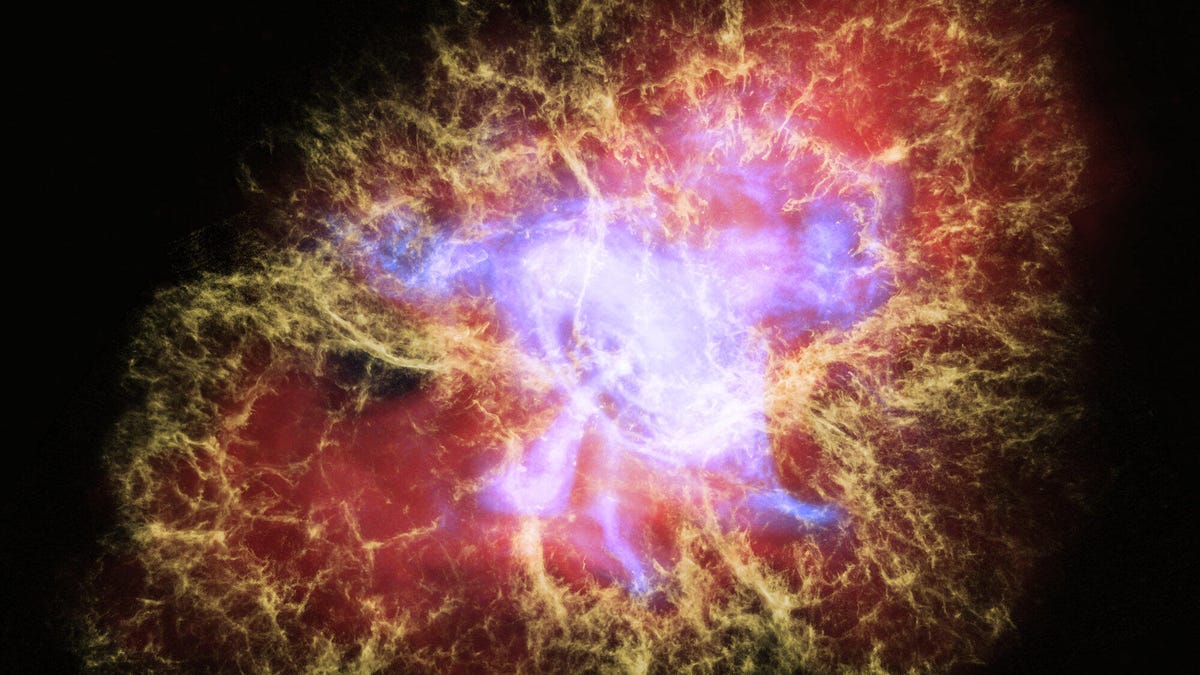Just look at this NASA view of the mess an exploded star left behind
NASA's new 3D visualization of the Crab Nebula takes you into the crazy heart of a star's scenic remains.

The Crab Nebula was formed by the remains of an exploded star.
A thousand years ago, people on Earth noticed the appearance of a bright star visible in daylight. They'd witnessed the death of the star that became the Crab Nebula. NASA released a new 3D visualization of this famous cosmic formation as a video that lets us gaze into the supernova's remains.
NASA called on the powers of the Chandra X-ray Observatory and the Hubble and Spitzer space telescopes to build a 3D visualization of the fascinating nebula. The observatories all "see" in different wavelengths.
"With this scientific interpretation, we want to help people understand the Crab Nebula's nested and interconnected geometry," said Space Telescope Science Institute visualization scientist Frank Summers. "The interplay of the multiwavelength observations illuminate all of these structures. Without combining X-ray, infrared and visible light, you don't get the full picture."
The video takes you on a ride through the wavelengths and how the observatories worked together to give us a fuller view of the Crab Nebula.
This isn't a typical supernova remnant. "The powerhouse 'engine' energizing the entire system is a pulsar, a rapidly spinning neutron star, the super-dense crushed core of the exploded star. The tiny dynamo is blasting out blistering pulses of radiation 30 times a second with unbelievable clockwork precision," said NASA.
The charismatic Crab Nebula is a popular target for astronomers. The European Space Agency recently shared a 2005 Hubble view of the nebula being photobombed by an asteroid. NASA's latest look just adds to the formation's legacy of gorgeous glamour shots.

